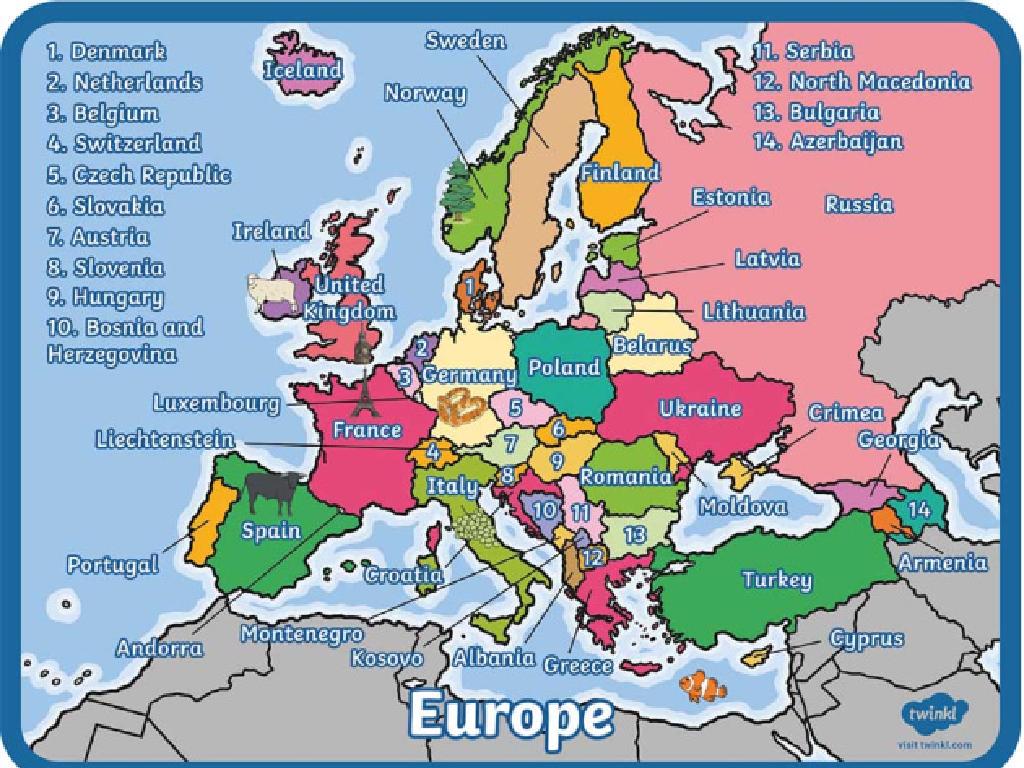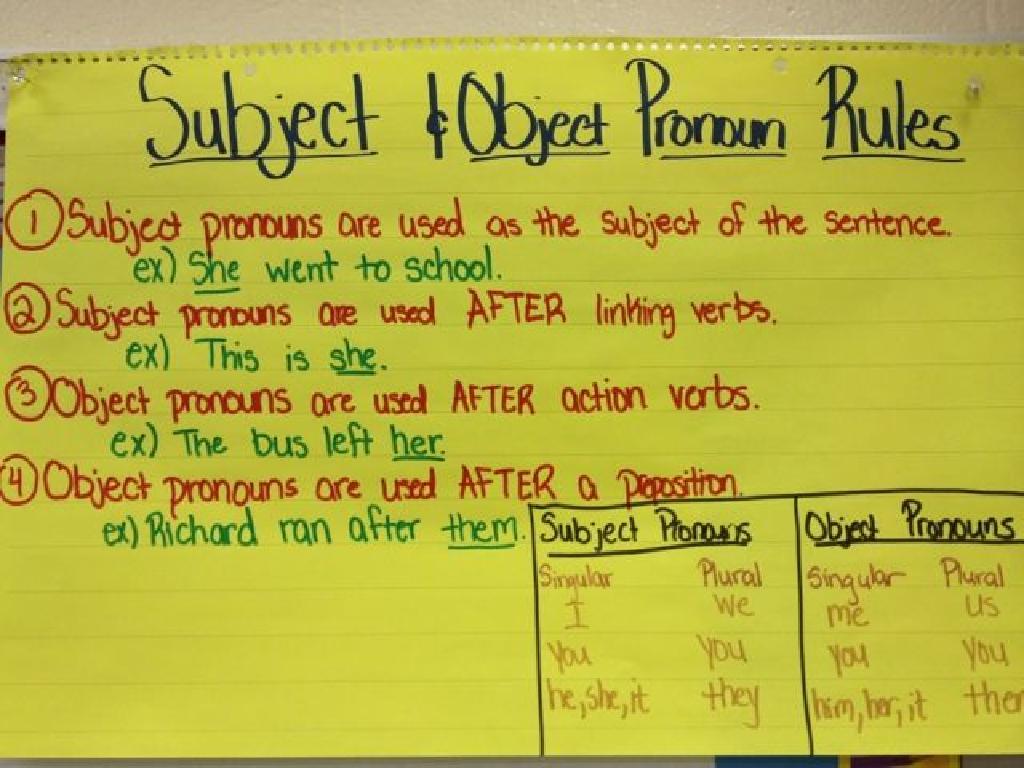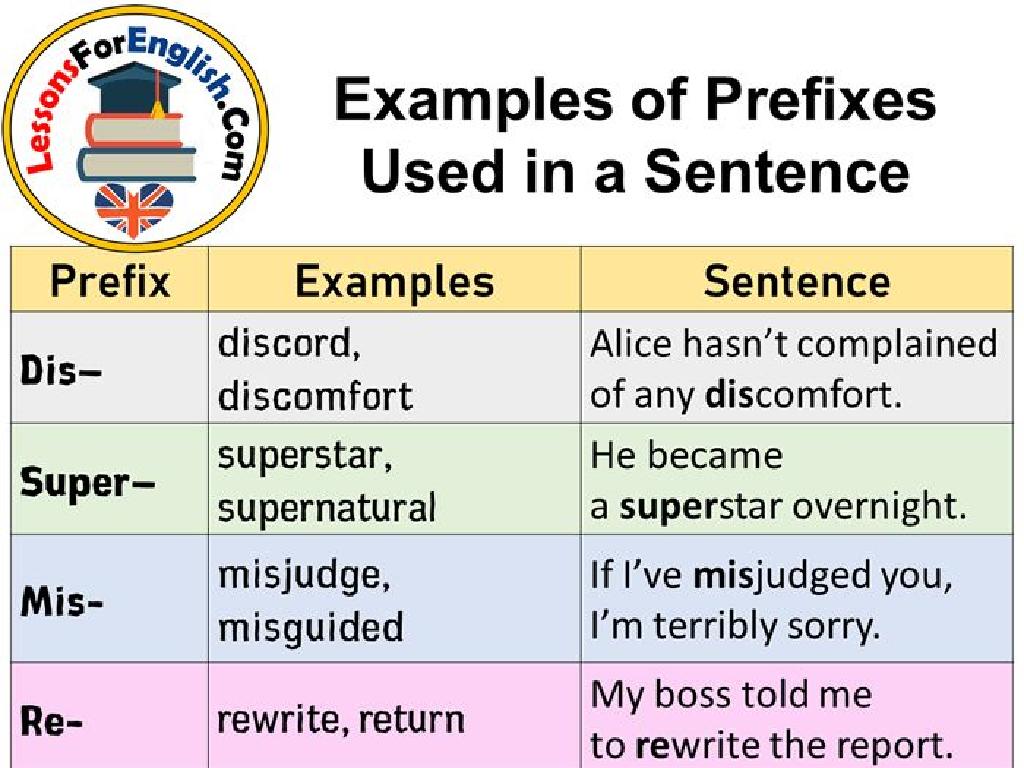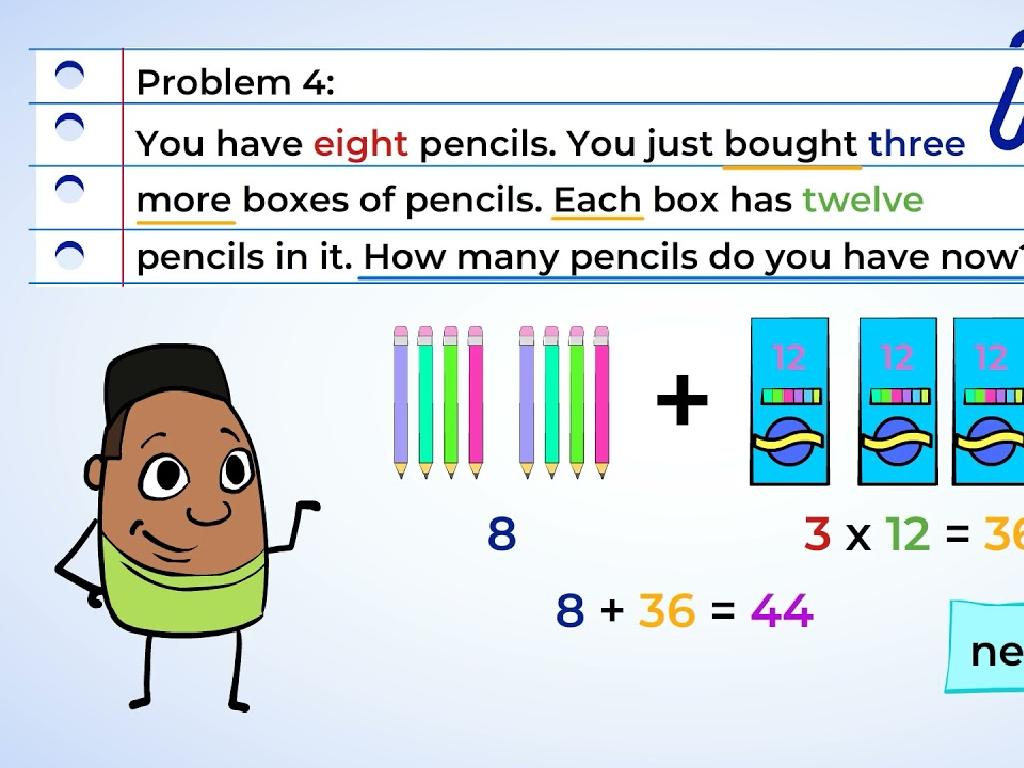Identify Oceans And Continents
Subject: Social studies
Grade: Third grade
Topic: Geography
Please LOG IN to download the presentation. Access is available to registered users only.
View More Content
Exploring Our World: Continents & Oceans
– Earth’s geography basics
– Define continents and oceans
– Large landmasses and vast bodies of water
– Seven continents of the world
– Asia, Africa, North America, South America, Antarctica, Europe, and Australia
– Five oceans we explore
– Pacific, Atlantic, Indian, Southern, and Arctic
|
This slide introduces students to the fundamental concepts of geography, focusing on the Earth’s continents and oceans. Begin by explaining that geography is the study of Earth’s landscapes, environments, and the relationships between people and their environments. Continents are very large landmasses found on Earth, and oceans are vast bodies of saltwater that cover most of our planet. Highlight the seven continents – Asia, Africa, North America, South America, Antarctica, Europe, and Australia – and the five oceans – Pacific, Atlantic, Indian, Southern, and Arctic. Use a globe or map to point out each continent and ocean. Encourage students to think about the different animals and cultures that might be found on each continent. This will set the stage for future lessons where each continent’s and ocean’s unique features will be explored in more detail.
Exploring Our World: Continents
– What is a continent?
– A large, continuous mass of land on Earth
– The Seven Continents
– Asia, Africa, North America, South America, Antarctica, Europe, and Australia
– Locating Continents on a Globe
– Use a globe to find where each continent sits on Earth
– Characteristics of Each Continent
– Each continent has unique animals, landmarks, and cultures
|
Begin the lesson by defining a continent as a large, continuous mass of land. There are seven continents on Earth, and each one is unique in its own way. Show the students a globe or a world map and help them locate each continent. Discuss the characteristics of each continent, such as the animals that live there, famous landmarks, and the cultures of people who live there. This will help students to not only identify the continents but also appreciate the diversity of our planet. Encourage students to share any personal experiences or knowledge they have about the different continents.
Exploring Our Oceans
– What is an ocean?
– A vast body of salt water that covers almost 3/4 of Earth’s surface.
– Names of the five oceans
– Pacific, Atlantic, Indian, Southern, Arctic
– Comparing ocean sizes
– The Pacific is the largest, while the Arctic is the smallest.
– Discovering ocean depths
– Oceans can be very deep, like the Pacific’s Mariana Trench.
|
Begin the lesson by defining an ocean and explaining its importance to Earth’s ecosystem. Introduce the five oceans, ensuring to highlight their names and locations on a world map. Discuss the relative sizes of these oceans, using comparisons to familiar objects or places if possible to make it more relatable for third graders. Finally, touch on the concept of depth, explaining that some parts of the ocean are very deep, and some are shallow. Use visuals like diagrams or pictures to help students visualize the depth of oceans. Encourage questions and curiosity about marine life and the different characteristics of each ocean.
Exploring Continents and Oceans
– Locate continents on the map
– There are 7 continents to find
– Find oceans on the map
– Oceans cover 71% of Earth’s surface
– Discover fun continent facts
– Asia is the largest continent
– Learn ocean trivia
– The Pacific Ocean is the largest ocean
|
This slide is aimed at helping third-grade students identify and locate the continents and oceans on a map. Start by showing a world map and pointing out each of the seven continents, ensuring to highlight their shapes and positions relative to one another. Next, move on to the oceans, explaining that they are the large bodies of water separating the continents. Share interesting facts, such as Asia being the largest continent and the Pacific Ocean being the largest and deepest ocean. Encourage students to share any fun facts they may know about each continent or ocean to make the learning process interactive. This activity will help students better understand the geography of our planet and the vastness of both land and water.
Exploring Size: Continents and Oceans
– Largest to smallest continents
– Asia is the largest, while Australia is the smallest continent.
– Largest to smallest oceans
– The Pacific Ocean is the biggest, Arctic Ocean is the smallest.
– Significance of geographical size
– Larger areas can have more diverse climates and ecosystems.
– How size affects Earth’s features
– Size influences weather patterns and natural resources.
|
This slide aims to help students understand the concept of size and its importance in geography. By ranking continents and oceans from largest to smallest, students can visualize the vast differences in the Earth’s geography. Emphasize that size can affect many aspects of a region, including the climate, the variety of living organisms it can support, and the availability of natural resources. Discuss how larger continents like Asia can have a wide range of climates from deserts to rainforests, while smaller ones like Australia have fewer climate zones. Similarly, the size of oceans can influence global weather patterns and marine biodiversity. Encourage students to think about how the size of their own state or country might influence the way people live.
Animals and Climates Across the Globe
– Animals unique to continents
– Kangaroos in Australia, Penguins in Antarctica
– World’s climate zones
– Tropics are warm, poles are cold
– Oceans’ impact on climate
– Oceans regulate temperature, affecting weather
|
This slide aims to teach students about the diversity of life and climate on Earth. Start by discussing how different continents have unique animals, such as kangaroos in Australia and penguins in Antarctica, to illustrate biodiversity. Then, explain the various climate zones, from the warm tropics to the cold polar regions. Highlight how oceans influence climate by distributing heat around the planet, which can affect weather patterns. Encourage students to think about how the climate in their own region might be influenced by the nearest ocean. This will help them understand the interconnectedness of geography, climate, and the living creatures that inhabit our world.
Let’s Review: Oceans and Continents
– Quick quiz on continents
– Can you list all the continents?
– Quick quiz on oceans
– How many oceans can you name?
– Recall continents and oceans
– Share your answers
– Be ready to tell us what you remember!
|
This slide is meant to be an interactive review for the students to recall and reinforce their knowledge of the world’s continents and oceans. Start with a quick oral quiz asking students to name the continents, ensuring to provide positive feedback and correct any mistakes gently. Follow with a similar quiz on oceans. Then, challenge the students to name all the continents and oceans from memory without looking at a map. This exercise will help them to solidify their understanding of the geography unit. Encourage participation and make it fun, perhaps by turning it into a game with points or rewards for correct answers. This will prepare them for more detailed lessons on each continent and ocean in the future.
Class Activity: Create Your World Map
– Draw the seven continents
– Label each continent correctly
Asia, Africa, North America, South America, Antarctica, Europe, Australia
– Draw the five oceans
– Color the map for different climates
Use blue for cold, red for hot, green for temperate
|
This activity is designed to help students visually understand the geography of our planet. Provide each student with a blank map outline. Guide them through the process of drawing and labeling the continents and oceans. Emphasize the importance of correct spelling. For the climate coloring, explain what each color represents and how climate varies across different parts of the world. Possible variations of the activity could include having students work in groups, use different materials for the map, or present their map to the class explaining their color choices. This hands-on activity not only reinforces their knowledge of geography but also allows them to engage with the material creatively.






